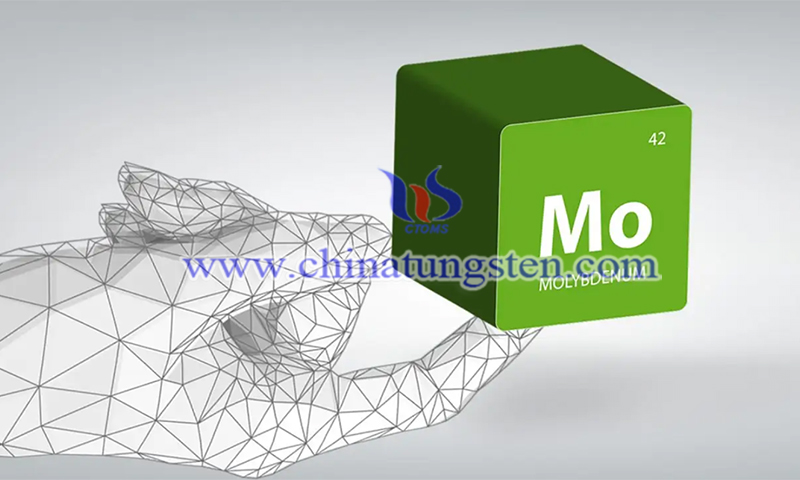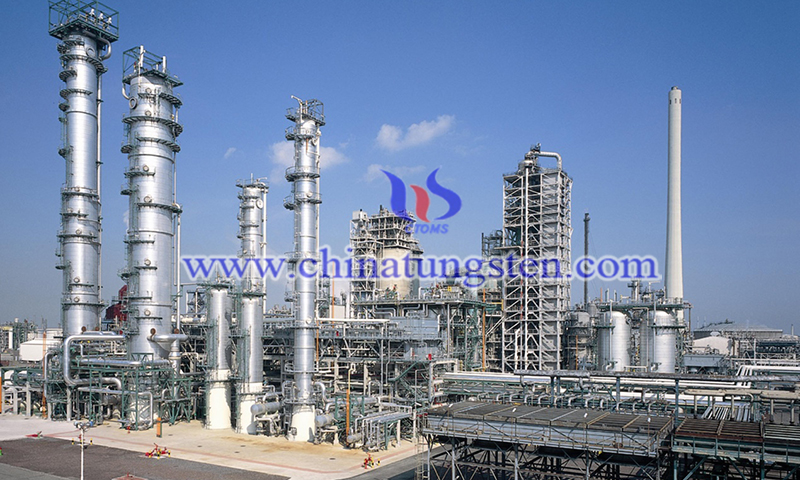Six Applications of Molybdenum
- Details
- Category: Tungsten Information
- Published on Monday, 28 March 2022 19:11
Molybdenum (Mo) is a refractory metal with a melting point of 2620°C. It hosts a small coefficient of expansion, high electrical conductivity, and good thermal conductivity. It does not react with hydrochloric acid, hydrofluoric acid, and alkaline solutions at room temperature, and is only soluble in nitric acid, aqua regia, or concentrated sulfuric acid. Therefore, Mo and its alloys have a wide range of applications and good prospects. In this article, we will describe 6 uses of Mo.
1. Mo uses in steel and alloys
In the steel industry, Mo is consumed in the largest quantities, mainly for the production of alloy steels (about 43% of the total Mo consumption in steel), stainless steels (about 23%), tool and high-speed steels (about 8%), cast iron and rolls (about 6%).
Non-ferrous alloys can be formed by using Mo as a base and adding other elements (such as titanium, zirconium, hafnium, tungsten, and rare earth elements). Mo -based alloys are used for their good strength, mechanical stability, and high ductility in high-heat components, extrusion tools, glass melting furnace electrodes, spray coatings, metalworking tools, spacecraft components, etc.

2. Molybdenum uses in the chemical industry
Mo dioxide is a good solid lubricant. This solid lubricant can be used properly under vacuum and at various ultra-low and high temperatures, so it is widely used in gas turbines, gears, molds, aerospace, nuclear industry and other fields.
Mo compounds are among the most widely used catalysts and are used in a wide range of chemical, petroleum, plastics, textile and other industries.
Chrome yellow and cadmium yellow are the most commonly used inorganic yellow pigments in the world today, but lead, chromium and cadmium are toxic. Mo yellow is not only non-toxic, but also has a bright color and good light and heat stability.
The toxicity of molybdate is low, and molybdate is weak to corrosion by organic additives added to corrosion inhibitors. Therefore, it is often used in the construction of cooling water and heating systems for air conditioning to prevent corrosion of mild steel.
3. Molybdenum in electrical and electronic applications
Mo has good electrical conductivity and high temperature resistance, and its coefficient of thermal expansion is similar to that of glass. It is widely used in the manufacture of core wire, lead wire and spiral wire hooks.
In addition, Mo wire is the ideal electrode wire for wire discharge machines. It can cut a variety of steels and carbides. Monolayer molybdenite materials have excellent semiconductor properties, some of which exceed those of widely used silicon and graphene, and have the potential to become the next generation of semiconductor materials.

4. Mo in the medical field
Molybdenum is one of the essential trace elements in the human body and a component of many enzymes. The main function of Mo in the body is to participate in the mutual reaction between sulfur, iron and copper. The right amount of Mo can promote human development, inhibit tumors, maintain the energy metabolism of the heart muscle and protect the heart muscle.
The deficiency of Mo in the human body can lead to dental caries, kidney stones, Keshan disease, esophageal cancer, and other diseases. Therefore, Mo is also used in medicines.
5. Mo in animal husbandry
The biological effects of Mo are mainly achieved by acting as a component of certain Mo-containing enzymes in animals and indirectly influencing the biological activity of the enzymes.
In addition, Mo plays a special role in the nutritional metabolism of ruminants. On the one hand, Mo is directly involved in the conversion of feed nitrate in the rumen as a component of the rumen microbial nitrate oxidase. On the other hand, Mo acts as a cofactor for sulfate oxidase and has a stimulating effect on microorganisms in the rumen. This helps ruminants to digest crude fiber and promotes ruminant growth.
Therefore, when the Mo content of forages and feeds is insufficient, Mo additives must be added to feeds in accordance with nutritional requirements and technical requirements in order to meet the needs of animals.
6. Mo in agriculture
Mo is one of the essential "trace elements" in plants. The deficiency of Mo can affect the normal growth of plants.
As an essential trace element for plant growth, Mo not only promotes the absorption of phosphorus in plants, but also accelerates the formation and transformation of alcohols in plants, increases the content of chlorophyll and vitamin C in plants, and improves their resistance to drought, cold and disease. In view of its importance for plants, many countries have started to produce and use micro-fertilizers containing molybdenum.
| Molybdenum Supplier: Chinatungsten Online www.molybdenum.com.cn | Tel.: 86 592 5129696; Fax: 86 592 5129797;Email:sales@chinatungsten.com |
| Tungsten News & Prices, 3G Version: http://3g.chinatungsten.com | Molybdenum News & Molybdenum Price: http://news.molybdenum.com.cn |



 sales@chinatungsten.com
sales@chinatungsten.com